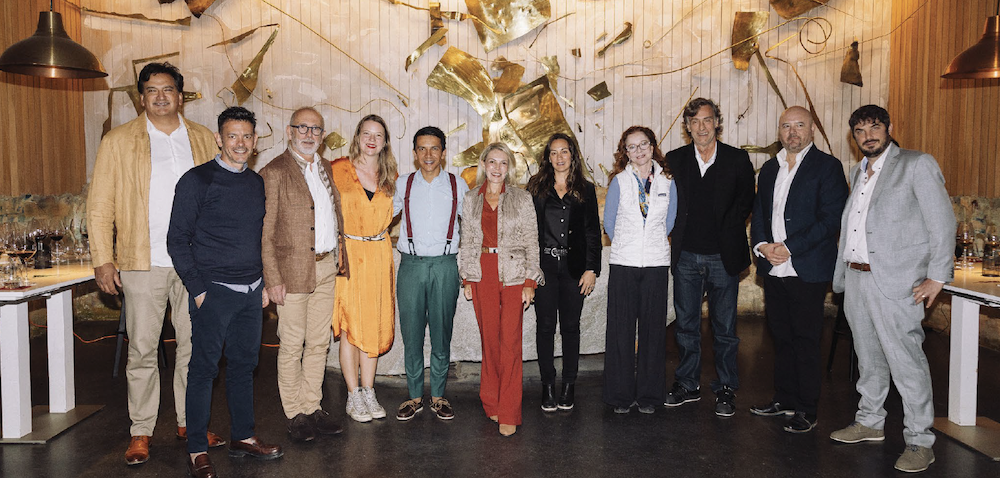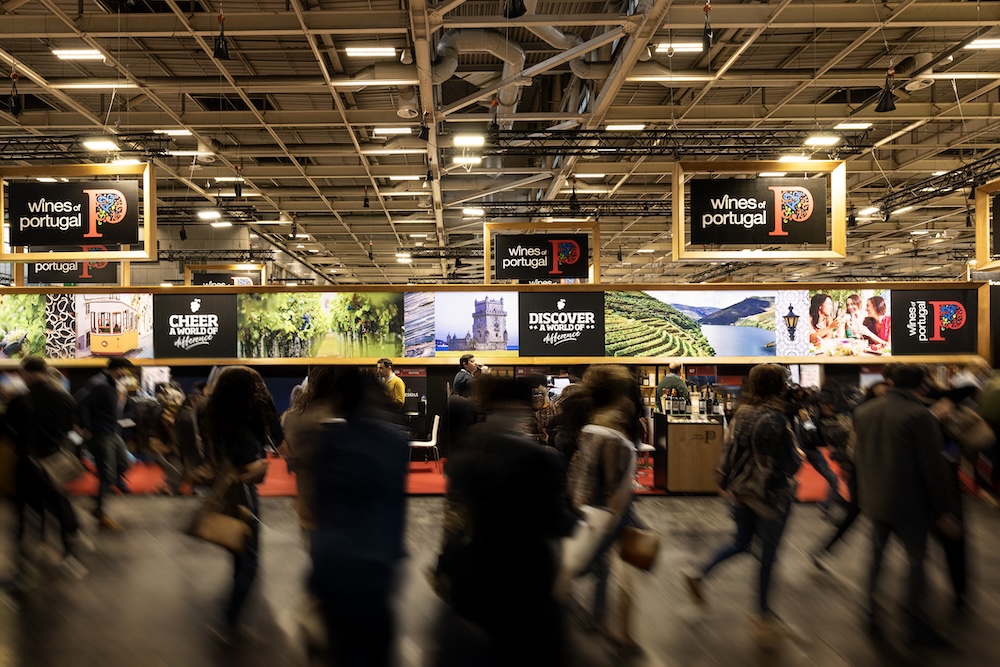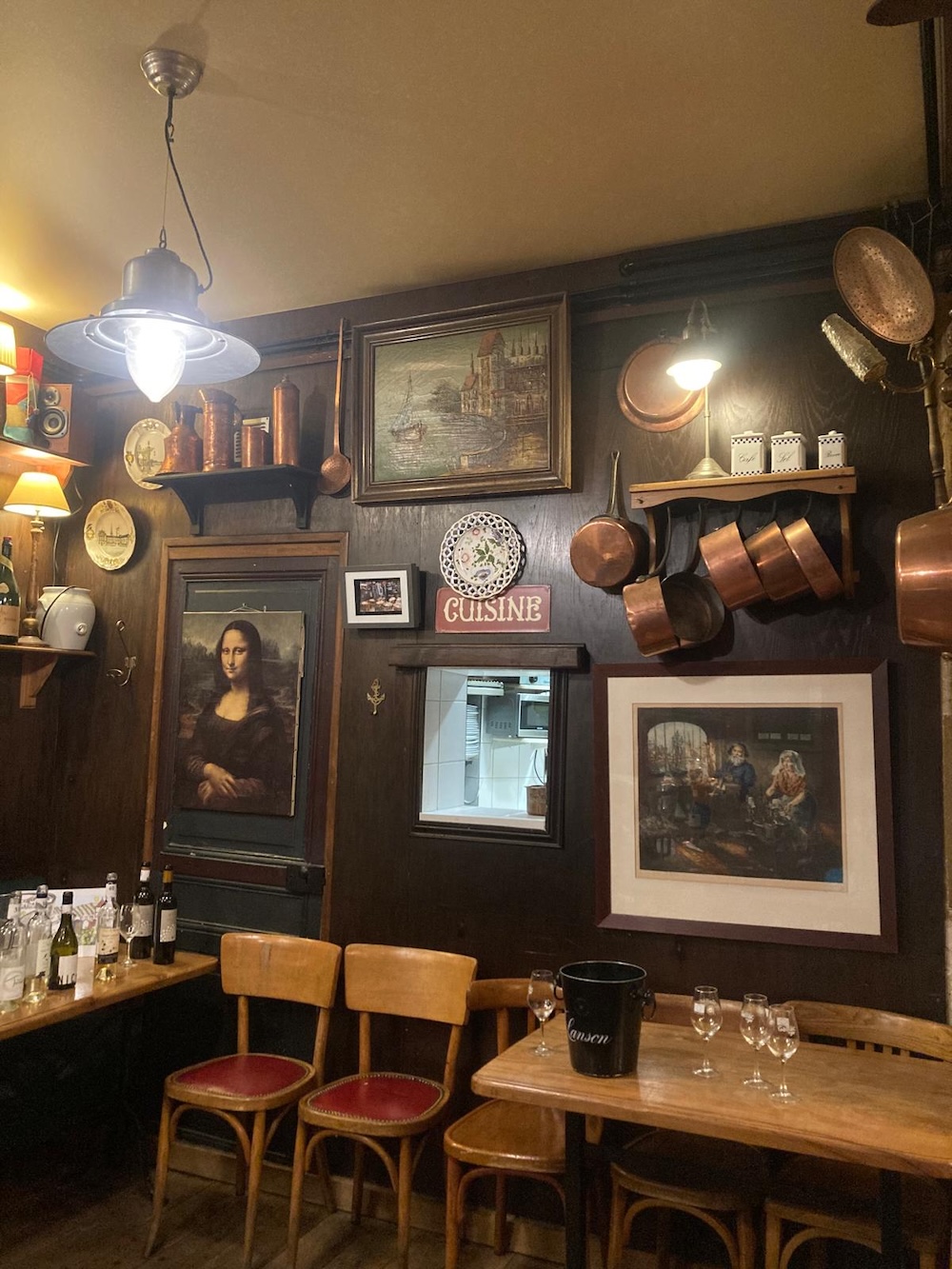
Discovery

Discovery
By Daniel Kříž - Photographs: Courtesy of the Winery Fund and archives of the respective wineries, posted on 23 March 2023
After three decades of a free-market economy, the Czech Republic is about to reach another milestone in its wine history. While in recent times, the local wine industry has always been a more or less disparate, yet in many ways co-operative, mass of competing businesses, over the past few months the idea of a common approach for the future has slowly begun to materialise. With the general support of winegrowers, the idea of a unified winery concept is being developed, with emphasis among others on production efficiency, the most suitable varieties, exports and the environment, in addition to the established focus on quality. After years of adolescence, a fully-fledged and self-confident wine region with very promising potential is breaking onto the scene.
 Czech wine production has only been developing over the last 30 years, but it has always built on tradition.
Czech wine production has only been developing over the last 30 years, but it has always built on tradition.
Wine has been a part of Czech culture for millennia, but the most interesting development, apart from its extraordinary boon in the Middle Ages, has been occurring over the last 30 years or so. With the fall of the Iron Curtain, the whole sector escaped the despair of the state-controlled economy and experienced exceptional development in a short space of time. While the neglected vineyards could be brought back up to speed relatively easily, the cellar management aspect required a complete restart. Winemakers had to buy new technologies for controlled fermentation very quickly and had to learn how to use them. And it is this technological leap, along with the safeguarded inter-generational know-how, and unbroken continuity of the relationship with the landscape, soil and vineyards, that started to turn Czech wine production into an industry where tradition meets quality.

The Czech Republic is split into two quite distinct wine regions: Bohemia, stretching along the 50th parallel with pockets of vineyards that together account for only about 4% of the country’s total area under vine, and Moravia, an area located in the south-eastern part of the country. With the 49th parallel as its backbone – very roughly akin to the Champagne region - the majority of local viticulture spans some 18,000 hectares producing some 600,000 hectolitres per annum.
The climate in the Czech Republic, as a Central European country, is unsurprisingly continental in nature, except for the occasional inland ‘raids’ of humid Atlantic air. Most summer months bring higher temperatures than normally seen at similar latitudes, a trend that has become more pronounced with climate change in recent years. This has a positive effect on shortening the vegetation stages of the vine and paves the way for relatively reliable cultivation of late-ripening varieties. In the Czech Republic, the grape ripening period is characterised by alternating warm and sunny days with significant night-time drops in temperature. This is substantially reflected in the aromas of white wines in particular, which also retain a pleasant acidity and bouquet. Their expression is further supported by the composition of the soil, which historically was formed on marine and freshwater sediments and loess. Together with the rugged topography of the landscape and the influence of the rivers, the soil and climatic conditions give rise to unique wines with great diversity.

With fewer than 20,000 hectares of vineyards, the Czech Republic is one of the smaller wine-producing countries and as such will never have the ambition of supplying large volumes of wine at low prices. Rather, it produces fairly small, special batches with an unmistakable Central European character. It is the compactness, the harmonious combination of full-bodied flavour with fresh acidity of Czech, usually varietal, dry white wines that is their most typical, positive characteristic, and the reason for exploring them. Recently, however, high-quality red wines have also been gaining ground; thanks to modern processing technologies, they are full-bodied and distinctive, yet also soft and velvety, with a pleasant fruity aroma. For the future, rosé wines are the trend, attractive not only for their colour but also for their youthful character, freshness and exceptional floral and fruity aromas.
The relatively northern location of this producer country also results in a varietal range dominated by white varieties (approximately 72%) within a very broad palette, which are complemented by red varieties (about 28%), around a third of them used to produce rosé, both light and dark-coloured. The most common white varieties are Grüner Veltliner, Müller Thurgau, Riesling, Welschriesling and Pinot Gris. These five varieties, however, only represent just over 50% of white vineyard acreage, which reveals just how diverse the varietal range here is. The most widely grown red varieties are Blaufränkisch, St. Laurent, Zweigeltrebe, Pinot Noir and Blauer Portugieser, which total almost 80% of vineyard area planted to reds, leaving other red varieties in a distinct minority. Growing grapes as part of an integrated production system is the standard approach locally. However, there are also more and more wineries managing vineyards to even stricter ecological standards, i.e. producing organic and biodynamic wines.
Czech wines put through their paces by Gilbert & Gaillard


To give the wine freedom, take a hands-off approach wherever possible and leave as much room as possible for terroir in connection with the variety, is the philosophy of the founder and owner of this winery. It produces in the range of one million litres annually and owns 125 hectares of vineyards and in less than thirty years has grown to become one of the largest wine companies in the country. The founder and driving force behind the winery, doc. Ing. Miloš Michlovský, DrSc., is one of the top personalities in the Czech wine industry; in addition to growing vines and making wine, he has also been moving the whole wine industry forward throughout his career. He innovates, breeds vines, gives lectures and writes technical books, to name a few. He has vineyards in many locations with a diverse range of soils, sub-soils, weather and sources of water as contributing factors. This, together with a very diverse varietal range and different vine spacings, gives rise to a plethora of combinations for characteristics in the resultant wines. The search for the best qualities and desire to preserve and promote them in wine are both endless and irresistible at the same time. Most of the wines are dry white wines from Welschriesling, Pálava, Pinot Gris and Sauvignon matured in oak barrels, but there are also barrel-matured dry red wines from Pinot Noir, Merlot, Cabernet Sauvignon, Blaufränkisch and St. Laurent; traditional method sparkling wines with a secondary fermentation in the bottle (ageing on lees for 3–10 years) and Charmat method sparkling wines. Non-alcoholic wines complement the range. The winery was the first to produce these in the country and is a constant innovator in this regard. Some of the alcohol obtained during dealcoholisation is used by the winery to make fortified wines. The vineyards and cellar management combine to form a sophisticated ecosystem since, in addition to emphasis on terroir, the focal point for Vinselekt Michlovský is a gentle and friendly relationship with the natural world. Around a tenth of the winery’s production is organic, but environmentally-friendly practices are applied throughout the production process in terms of handling the grapes sensitively or using as little sulphur dioxide as possible. Respect for nature and its hands-off approach are one of the reasons why the winery is intensively involved in breeding resistant varieties for environmentally-driven viticulture.

If you had to sum up the THAYA Winery in one word, it would probably be “dynamism”. The taste and tremendous energy for making extraordinary wines can literally be felt in every step you take in the winery. The initial drive behind the new winery – or rather transformation of what was initially a smaller business – was ambitious plans to build a winery and state-of-the-art facilities, a hotel and restaurant with emphasis on wine tourism and wine & food pairing. As the former small winery did not allow this, two years ago a brand new building broke ground on the old winery platform with an annual production of around 200,000 bottles. The initial facilities quickly grew from 23 hectares to the current 105 hectares. The local vineyard sites have been known since the ancient Romans for their unique sun-facing location and the favourable temperature-controlling influence of the meandering River Thaya, which together with the cold winds from the northwest gives the local wines an unmistakable spicy taste and fullness. Although the local grapes ripen fairly slowly, they retain their aromatic substances and achieve high quality. On granite bedrock and loess with an admixture of calcareous clays, the winery is mainly dedicated to Veltliner, Sauvignon Blanc, Riesling, Chardonnay and Pinot Blanc; for the red varieties, Pinot Noir, St. Laurent, Blaufränkisch and Zweigeltrebe are predominant, all primarily as dry still wines. For the future, the winery is also heading towards the ‘royal discipline’ – its own sparkling wines. It uses both stainless steel tanks and oak barrels of various sizes, ages, coopers and toasts. The main credit for the quality of the wine goes to the thirty-one-year-old Jakub Smrčka, the current recipient of the Czech Winemaker of the Year award. He develops the wine and is not afraid to experiment. In the winery, he is in charge of the wine from picking the very first grapes to the bottle being cellared. His unwavering commitment is that each vintage must be a little better than the previous one, especially for the higher end offerings. Through its determination, the winery also has an avowed ambition to produce the best wine in the Czech Republic. Currently, THAYA Winery sells wine mainly to the domestic market, but this year it has also established markets abroad, in countries such as Belgium, the Netherlands, Luxembourg, Denmark, Norway and the USA.


Maňák Winery was founded – like most wineries in the Czech Republic – in the early 1990s. The owners – a married couple – continued the tradition of their ancestors and began to produce wine with a philosophy based on combining modern practices with traditional methods. Today, the winery manages 25 hectares in three vineyards. It applies integrated production principles, using beneficial insects to combat pests and planting the vineyards with a special herbal mixture to promote biodiversity and soil quality. Maňák Winery produces approximately a quarter of a million bottles of appellation-only wines (70% white) and focuses on a great range of grape varieties (35 in all), which is very typical of wines in the Czech Republic. The winery’s hallmark varietal though is Sauvignon Blanc, which customers can find both in wood-matured and stainless steel iterations. It manages some 150 French barriques with an individual capacity of 225 litres for producing white wines, red wines (especially Pinot Noir) and even straw wines. But it certainly does not limit its production to wooden barrels. As the winery established itself in the market, it also grew in terms of facilities and technology. Today, it boasts the latest technology both in the vineyards and in the winery. It also has a cutting-edge laboratory to analyse the wine and grapes, which is already an indispensable part of 21st-century winemaking. This year, an impressive showroom was also added, where the winery presents both individual wines and popular events focused on pairing wines with food. Like most wineries in the Czech Republic, the domestic market is key and Maňák Winery distributes its wines primarily to restaurants and wine shops. However, direct-to-consumer sales are also buoyant. Its gradual growth has opened up export markets in neighbouring Poland and Slovakia. Although it is still a relatively modest family business, its success on the domestic, and increasingly the international scene, shows that its development is far from reaching its limits. In recent history, the firm has achieved three world champion titles in competitions held under the auspices of O.I.V.


Even after ten years, B\V Winery is still a relatively young business. It was born out of sheer joy and passion for wine and developed into a full-fledged winery over the years. There is still quite a long way to go, especially in the vineyards, where the very diverse varietal range is still largely defined by the state in which the vines were bought. The most valuable vineyards and key varieties have been kept and developed, whereas those that do not fit perfectly into the desired concept are gradually renewed. At present, the firm manages 63 hectares of bearing vineyards and 12 hectares of new plantings. Among the 250,000 bottles produced annually, Riesling, Chardonnay, Gewürztraminer and Pinot Noir are the predominant varieties, mainly used for producing dry, still appellation wines. The winery’s signature wines are blended – starting with the standard product line – on fine lees and are always bottled and released in the autumn of the following year. Riesling is the flagship varietal here and is left to mature in the bottle for two years longer. In fact, bottle ageing for the higher-end wines matured in French oak barrels is another characteristic of the winery. While drawing on the best traditions and winemaking experience in the Czech Republic, it is also looking purposefully to the future and further development in the form of investments in vineyards, technology and winery facilities, including an emphasis on wine tourism and state-of-the-art sales service. The wines are made in a stylishly redesigned historic building of the former chateau granary from the early 18th century when the conversion of the local chateau into the Baroque style reached its peak, but the winery itself is not just about history. B\V Winery was founded primarily for pleasure and therefore it is not compelled to make unwanted compromises and give into the pressure of business results. Thus, despite the relatively large production volume by national standards, the local wines will not be found in supermarket chains, but exclusively in places where they are generally well taken care of and where the sellers know how to present them properly. Although still a young business, B\V Winery’s wines have been successful in international competitions for a long time.


As 2022 transitions into 2023, the Czech Republic Union of Winegrowers, the largest industry body representing the majority of growers, is in the process of developing a long-term blueprint that will help winegrowers and winemakers face future challenges in a stronger, more coordinated and profitable way for at least the next 10 years.
Winemaking, but especially viticulture, is a very long haul. A major part of vineyards in the Czech Republic is still designed for historical farming practices and their varietal range, to a large extent, continues to cater to consumer tastes of the past. Newly planted vineyards are also about efficiency – the sites need to be adapted to new technologies. Vine spacing, for instance, was historically designed to be extremely wide and suited to machines used in the last millennium. Changing densities will of course have a significant impact on yields and the production of high quality wines will increase despite the reduction in crops. Vineyard acreage itself is unlikely to grow apace due to planting quotas.

The Czech Republic is only about one-third self-sufficient in wine. This of course has a significant impact on prices, especially for cheaper wines – a small national winery can never fully compete with large-scale, cheap imports. The raw material here is simply too rare for the resultant wine to sell for two or three euros. Winemakers will certainly focus even more on the production of higher quality wines, which, despite higher production costs, will be more profitable. The raw material will be more abundant given more efficient new plantings, and therefore an increase in export interest can also be expected.
Export ambitions are somewhat hamstrung by the very wide range of varieties. However, this too will undergo considerable changes through new plantings. Winemakers heading to Western Europe are not the only ones to have started switching their varieties to the most characteristic and best-suited ones in each region because only high quality, individuality and uniqueness can bring success faced with extremely strong international competition. All of this goes hand in hand with a strong emphasis on an environmental approach to farming and production, including an even higher proportion of resistant varieties.
Wines from the Czech Republic will be increasingly present in European restaurants and wine shops and at least elementary knowledge of them will be a prerequisite in any advanced wine company. The Czech Republic has undoubtedly reached a very solid level in terms of winegrowing, but its development is far from over. As emerging plans and visions for the next decades bring new promises, it will be important to follow their implementation. Watch this space…

Discovery

Discovery

Discovery